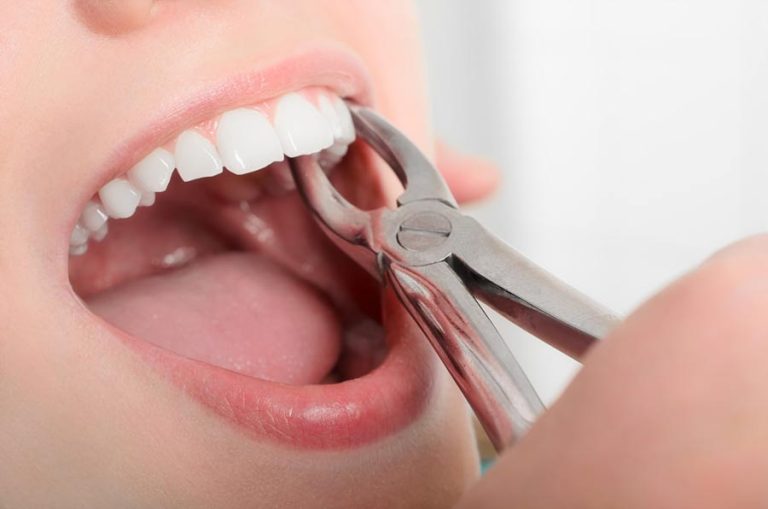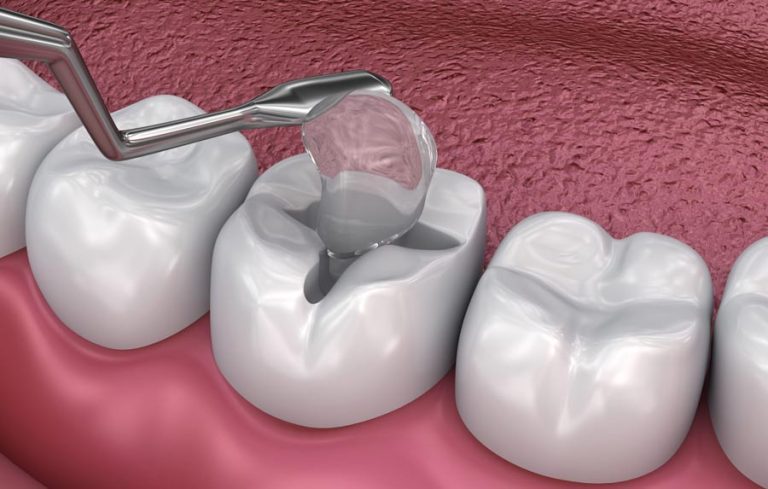If you’ve ever had a gap in your smile due to missing teeth, you might have wondered about your options for filling that gap.
Here, we will talk about the best solution for your problem: Dental Bridge. It is a dental appliance designed to replace one or more missing teeth. It works like a bridge that connects the gap between your teeth, restores your smile, and helps you speak and chew more effectively.
Throughout this guide, we’ll explore the different types of dental bridges available, from traditional bridges to implant-supported ones. We’ll also discuss which type of bridge might be the best fit for you based on your specific needs and circumstances. Whether you’re curious about the procedure involved in getting a dental bridge or simply want to weigh the pros and cons, we’ve got you covered. By the end of this blog, you’ll have a clearer understanding of what Dental Bridges are and how they can benefit you. Let’s start learning!

Learning the Basics: What Is a Dental Bridge?
A dental bridge is a common solution for replacing missing teeth. It’s named after a bridge because it spans the gap left by those missing teeth, just like a bridge spans a gap between two places.
The main parts of a dental bridge include the abutment teeth, crowns, and pontics. Each part plays a crucial role in restoring your smile’s appearance and ability to chew properly.
Abutment Teeth are the healthy teeth next to the gap from missing teeth. Dentists reshape them to support the bridge and hold the artificial tooth, known as a pontic. Sometimes, dental implants can take the place of natural teeth as abutments.
Crowns are custom-made caps placed on the reshaped abutment teeth. They securely hold the pontic in place, ensuring the bridge remains stable.
Pontics are the artificial teeth that fill the gaps left by missing natural teeth. They attach to the crowns on the abutment teeth, restoring both the appearance and function of your smile.
One standout feature of dental bridges is their ability to match the color and shape of your natural teeth. This means they blend in seamlessly with the rest of your teeth. Another important aspect of bridges is their strength and durability. They allow you to enjoy a natural-looking smile while still being able to eat all your favorite foods.

What Are the Different Types of Dental Bridges?
There are four different types of dental bridges. Dentists use them based on your individual dental condition. Let’s read about each type:
Traditional Bridges
Traditional dental bridges are the most common option for replacing missing teeth. They consist of two crowns placed on healthy teeth surrounding the gap, with one or more points in between.
Dentists use them in cases when you have natural teeth on both sides of the gap. They’re a reliable choice for restoring your smile’s appearance and function. However, they involve shaping the nearby healthy teeth to hold the bridge in place, which may weaken them. Additionally, traditional bridges may need replacement over time due to wear and tear.
Cantilever Dental Bridge
A cantilever dental bridge is similar to a traditional bridge, but it has a crown on only one side instead of both sides. This means it relies on just one healthy tooth for support, unlike the traditional bridge that uses two. Dentists use cantilever bridges when there’s only one healthy tooth next to the gap created by the missing teeth. They’re not as common as traditional bridges because they can put more pressure on the supporting tooth, which may not be suitable for everyone.
Walk-in Family Dental
Do You Need Emergency Dentist?
Walk-in Family Dental provides quick and expert care for dental emergencies, including toothaches and knocked-out teeth.

Maryland Dental Bridge
A Maryland dental bridge, also called a resin-bonded bridge, is another kind of dental bridge. Instead of using crowns, it relies on metal or porcelain wings attached to nearby teeth at the back. Dentists often suggest Maryland bridges for replacing front teeth, especially when the surrounding teeth are strong and healthy. They’re less invasive since they don’t need shaping the nearby healthy teeth to hold the bridge in place. However, they may not be as strong or last as long as traditional bridges.
Implant-Supported Bridge
An implant-supported bridge is a special kind of dental bridge that doesn’t rely on natural teeth for support. Instead, it’s attached to small metal posts, called dental implants, that are put into your jawbone.
Dentists suggest this type of bridge when you’re missing several teeth in a row and don’t have strong natural teeth nearby to support a regular bridge. These bridges are really strong and can last a long time, helping you chew and talk just like with real teeth. They also keep your jawbone healthy and can stop other teeth from falling out.
However, getting an implant-supported bridge involves surgery and takes longer than other kinds of bridges. Before deciding on this option, your dentist will look at your overall oral health and your preferences.
In addition to dental bridging services, you can choose from the services Dental Implant Take advantage and have a beautiful smile for yourself

Which Type of Dental Bridge Is Suitable for Me?
Deciding on the best type of dental bridge for you depends on several factors, including:
- Location of missing teeth: Different bridges work better in different parts of the mouth.
- Condition of adjacent teeth: Healthy teeth nearby may be needed for some types of bridges.
- Oral health: Your dentist will check your teeth and gums to make sure they’re healthy enough for a bridge.
- Budget: Some bridges cost more than others, so your Cosmetic dentist in North York dget may affect your choice.
- Personal preferences: You may have preferences about how the bridge looks or feels, which can also affect your decision.
If you need services, beauty services It is one of the best options for you
What Happens During a Dental Bridge Procedure?
The procedure of getting a dental bridge depends on the type of it. Here is a general step-by-step procedure for each type.
For Traditional or Cantilever Bridges:
- Your dentist will numb the area with local anesthesia for comfort.
- They will then prepare the adjacent teeth by reshaping them.
- Next, they will take impressions of your teeth to make the bridge.
- While waiting for the permanent bridge, they may place a temporary one.
- Once ready, they will fit and cement the final bridge.
For Maryland Bridges:
- Your dentist will bond metal wings to the backs of the adjacent teeth.
- They will take impressions and send them to a lab to create the bridge.
- At the next appointment, they will fit and bond the Maryland bridge to the teeth.
For Implant-Supported Bridges:
- Your dentist will surgically place dental implants in the jawbone.
- After healing, they will attach abutments to the implants.
- They will take impressions, and a lab will make the final bridge.
- Finally, they will attach the bridge to the implants, restoring your smile’s function and appearance.

How Do I Care for My Dental Bridges?
Taking care of your dental bridges is important to have them for years. Here are some easy tips to help you do it:
- Brush your teeth twice a day with a soft toothbrush.
- Floss between your teeth and around the dental bridge every day.
- Rinse your mouth with mouthwash to keep it clean and fresh.
- Be careful with hard or sticky foods that could damage your bridges.
- Visit your dentist regularly for check-ups and cleaning.
Walk-in Family Dental
Do You Need Emergency Dentist?
Walk-in Family Dental provides quick and expert care for dental emergencies, including toothaches and knocked-out teeth.

The Take Away
In conclusion, dental bridges offer a reliable solution for replacing missing teeth and restoring both the appearance and function of your smile. Traditional bridges, cantilever bridges, Maryland bridges, and implant-supported bridges each have their own advantages and considerations, depending on your specific dental condition and preferences. The procedure for getting a dental bridge varies depending on the type. Taking care of your dental bridge is important, so remember to brush and floss regularly and see your dentist for check-ups.
If you are considering getting dental bridges, contact us now. At Walk-in Family Dental, we’re here to help you choose the right dental bridge for your needs and provide personalized care. Don’t let missing teeth stop you from smiling! Contact us today to start your journey to a healthier, happier smile.
FAQ
What are the four types of dental bridges?
Traditional, cantilever, Maryland, implant.
What are the four types of dental bridges?
Depends on your teeth. See a dentist







